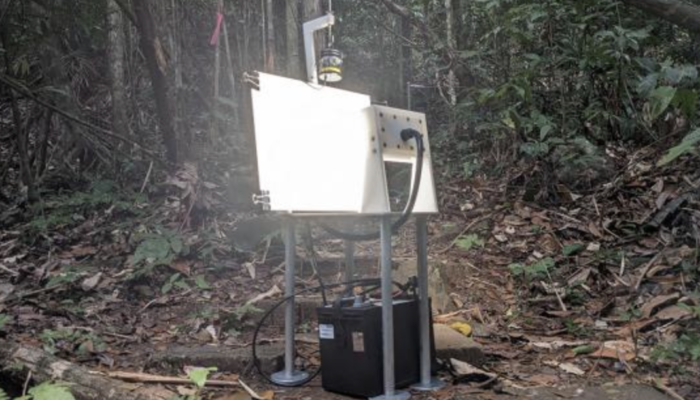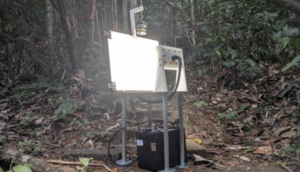New technology enabling the automated monitoring of moths has been put to rigorous testing in tropical conditions in Panama by an international team including researchers from UKCEH. Dr Tom August explains more…
The rustling sounds of howler monkeys passing through the canopy is abruptly interrupted by a wail of excitement as one of our entomologists spots a butterfly flitting through the dappled light, “WOW! Oh boy! Did you see that?!”
Our team was in Panama to test new technology for monitoring moths during the night, but in the day we made the most of our time in one of the most biodiverse regions of the world.
Back at the research station we set about assembling our moth monitoring systems. Batteries on charge, SD cards readied, and we all try to keep our expectations in check. After all, this is the first time anyone has tried any of these automated insect monitoring systems in the tropics where the heat and humidity is intense.
Our home for the week was Barro Colorado Island in the middle of the Panama Canal. The US-based Smithsonian Tropical Research Institute has been doing research here since the 1920s and it has everything needed for a successful trip. Accommodation, canteen, and a diverse and well-studied community of moth species.
The research team from Europe and North America have been motivated to explore new ways to monitor insect populations in the wake of shocking reports in recent years of large, long-term declines in insects as a result of human activity. Bringing together engineers, entomologists, computer vision experts, and data specialists, we were in Panama to work out if we can develop automated systems for monitoring insects. The systems use solar power to run for months at a time, and use the latest AI to analyse thousands of images collected each night.

